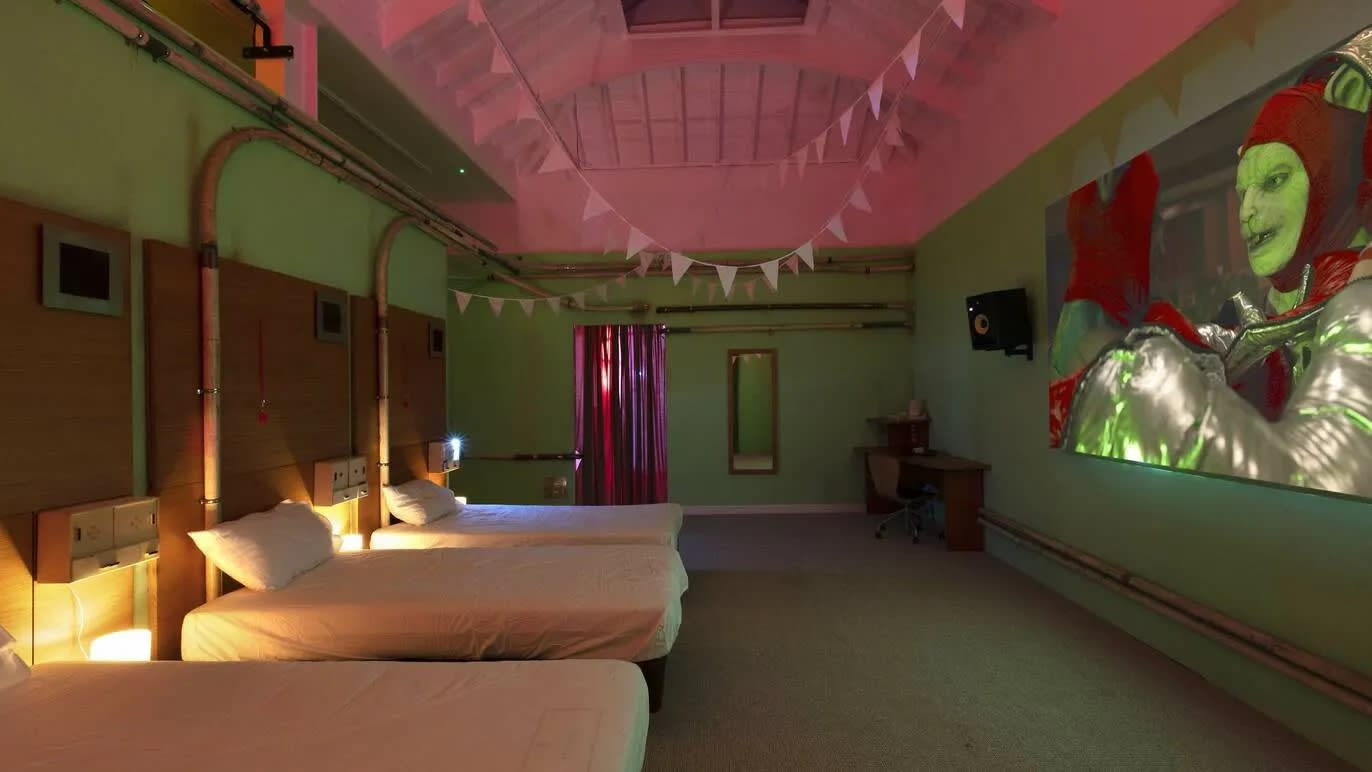18 January 2023 Ever wanted to become so entwined with someone that you become one person? Rats know all about that desire. There’s the cryptid myth of the Rat King, a mass of rats whose tails have become knotted together, creating one giant, many-headed, dreaded, inseparable (and dead) mega-rat. Now that’s love, that’s togetherness.

Jenkin van Zyl: Surrender, installation view, Edel Assanti, London, UK, 2022. Photo: Will Amlot.
You enter young English artist Jenkin van Zyl’s installation through a giant silver inflatable rat’s mouth, winding your way along a corridor that acts as its guts, before you get spat out into your very own room at a love hotel. The beds are made and the medicine cabinets are stocked, so you settle in, pull the covers up and watch van Zyl’s dizzying, hectic film.
It shows rat-human hybrids – all sharp teeth and bare-bummed eroticism – losing themselves in increasingly impossible, improbable competitions; they cuddle, hold hands, draw each other. The masked referees barely allow them any rest, constantly pushing them to go further, get closer, to lose themselves in love and movement. It culminates in a wild dance battle, with one character somehow being crowned the winner and limping their way home.
In its mutant animal surrealism, Jenkin van Zyl’s film nods to Matthew Barney’s Cremaster cycle, in its dystopian, post-apocalypticism it references classic 1980s films like Brazil and Threads. It’s dense with references to queer club culture, dance marathons and hedonistic abandon.
The film is over-long and indulgent, but the installation as a whole still works. Because in all his sensuality, violence and threat, Jenkin van Zyl leaves you feeling some powerful, overwhelming emotions, proving that he’s one of the most exciting young artists in the UK today. One quote from the film sums it up: ‘We congregated because we all wanted the same thing: escape.’ This is art about abandon, about losing yourself, about love and desire persevering in the face of a capitalist society that wants to turn those things into products and commodities. It’s about escape and individualism. And rats. And it’s very, very good.


